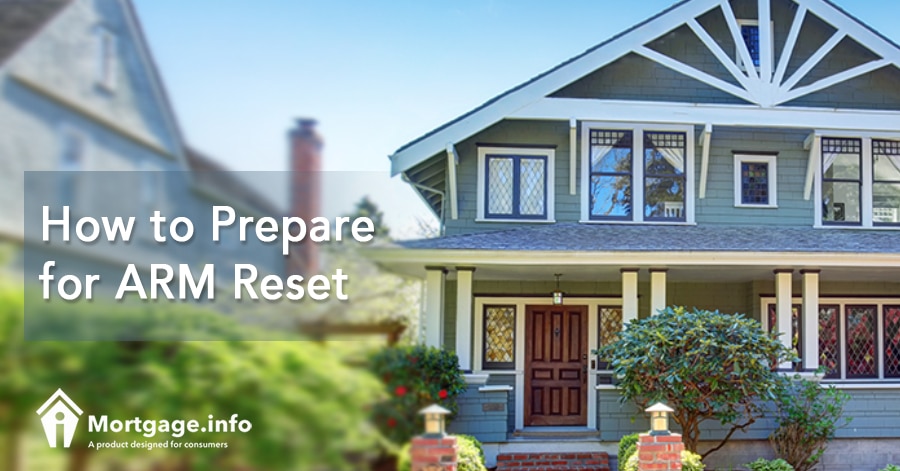If your adjustable rate mortgage is about to reset, you could be in for a major financial surprise. Before you get in over your head, learn what you should do to prepare yourself. The earlier you start acting, the more prepared you will be for the new rate when it comes.
Looking for Current Mortgage Interest Rates? Click Here.
Read Your Loan Documents
The first step is to pull out your loan papers from the closing. Read the fine print and determine how your new rate will be determined. The papers should detail how the lender will determine your adjusted rate. Look for the margin and the index. The margin is predetermined number that the lender adds to the current value of the chosen index. Once you know the margin, find out which index the lender uses, such as LIBOR and you’ll have an idea of what your rate might be when it adjusts.
Along with the margin and the index, you’ll need to know the annual cap and lifetime cap. These are the maximum amounts the rate can adjust to on adjustment dates. The annual cap is the maximum amount the rate can change in any given year. The lifetime cap is the maximum amount the rate can change over the life of the loan. You’ll also see a floor and ceiling rate. This sets the minimum and maximum rates you’ll ever see.
Determine Your Financial Position
Now that you know the worst-case scenario, determine if you can afford it. Let’s say the rate will adjust to 6% in the worst case. Next, using a mortgage calculator, you should determine what that would do to your payment given your principal balance. Can you afford that payment? If not, it’s time for damage control. If you can, it’s up to you if you want to keep the loan or refinance out of the ARM.
Refinance Your ARM Before it Resets
If you know you will not be able to afford the adjusted rate, it’s time to refinance quickly. You want to get out of the loan before the ARM resets. This time it’s best if you refinance into a fixed rate loan. This way you don’t have to worry about the rate adjusting in the future.
Click to See the Latest Mortgage Rates.
If you are worried about qualifying for a fixed rate, you can consider an FHA loan. They have more relaxed guidelines and only require 3.5% equity in the home. You can refinance with a credit score as low as 580 and a debt ratio as high as 29% on the front-end and 41% on the back-end.
Dealing With the ARM in the Future
Don’t forget, your ARM will likely adjust every year. Even if you can afford the payment resulting from the first adjustment, there will be many more in the future. Knowing the worst-case scenario can help you be prepared. But, if you are having trouble affording the higher payment after adjustment, it may be time to consider your other loan options. You can refinance into a fixed rate and forget about the risk of adjusting or you can take another ARM, using the introductory period all over again.
What’s the Right Choice?
Your future plans will help determine the right choice. Obviously, if you can’t afford the new payment, you have no choice but to refinance. If you can afford it, though, you have some choices to make. Ask yourself:
- Will you move soon? If so, you might not want to pay for a refinance. If you’ll only pay the higher interest rate for a short time, it’s probably the cheaper option than paying several thousand dollars to refinance out of it.
- Will you stay in the home? If you will stay in the home, you’ll probably want to minimize the amount of interest you pay. You should explore your options for refinancing as soon as possible.
Preparing for your ARM reset is the best way to ensure that you make the right decision. Knowing when it will adjust and the maximum it could adjust to will help you know the next step. Whether you have to budget for a higher payment or you decide to refinance right away, you can put the steps in motion to make the right changes.

